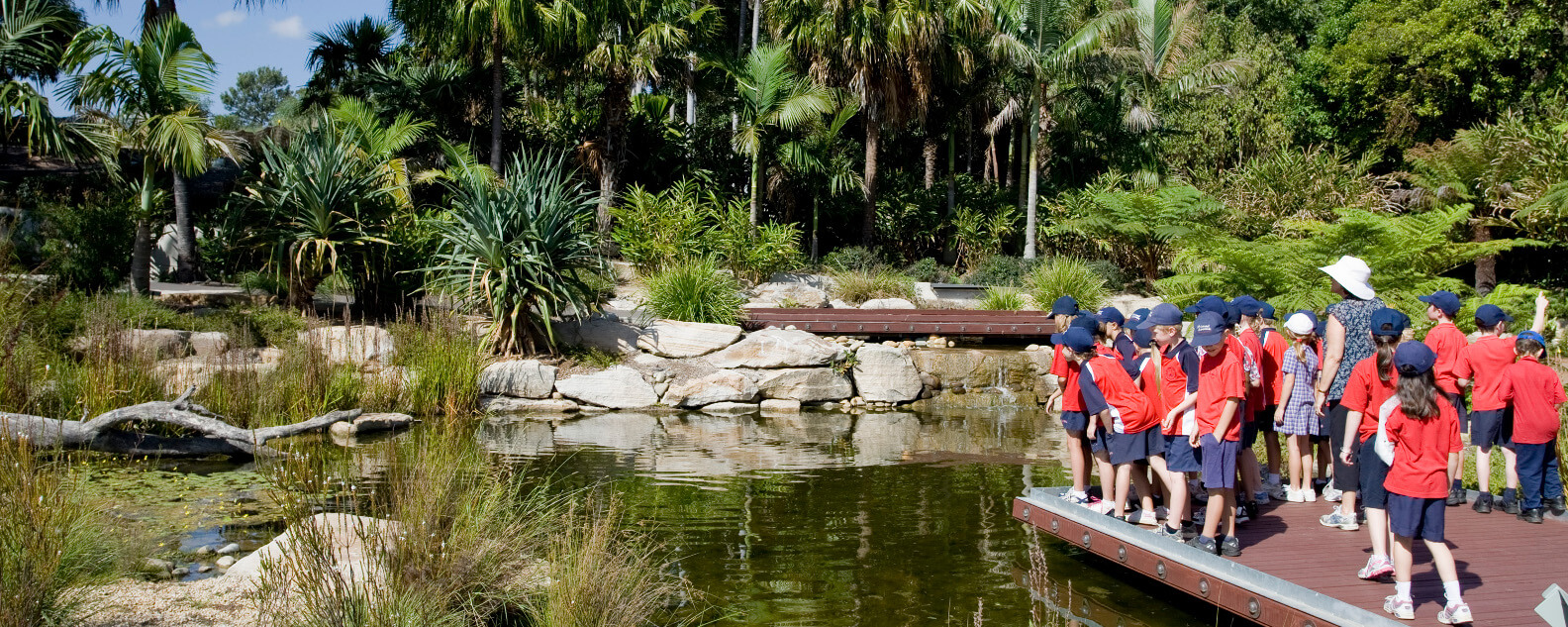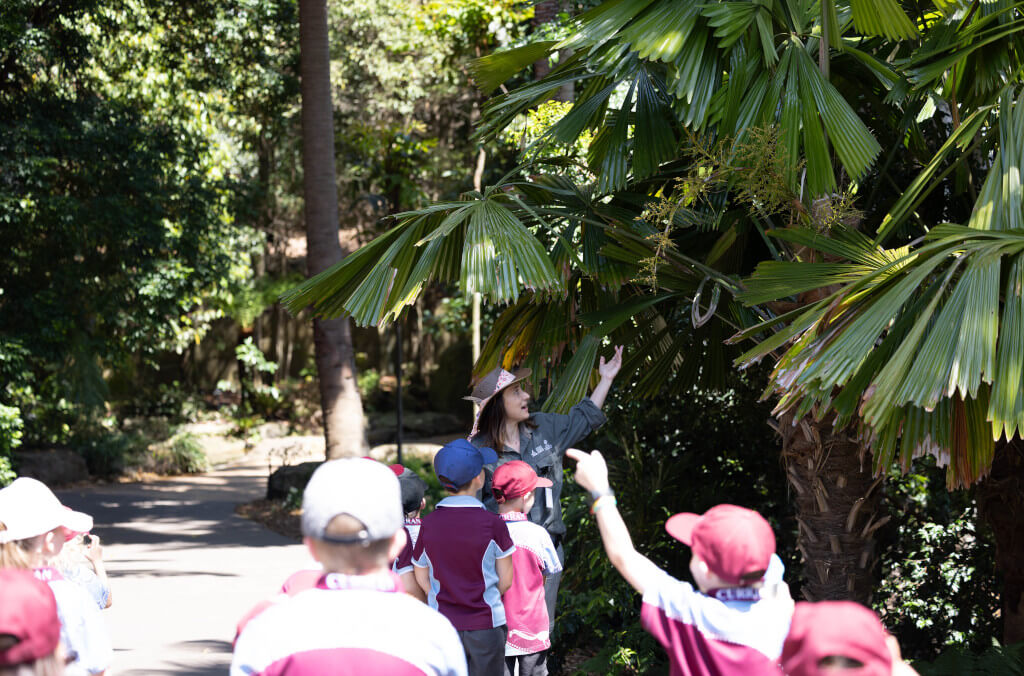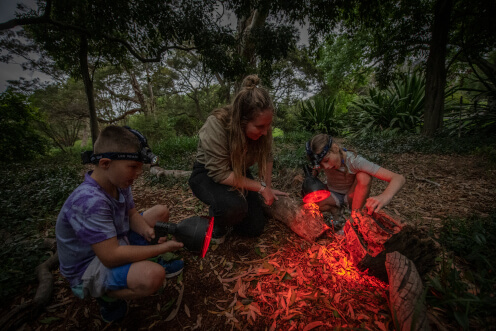Look Out for Living Things
Explore the amazing world of plant and animal habitats in the Gardens and discover the characteristics and needs of living things.

Early Stage 1
Science
2 hours
Minimum charges apply. Discounts apply for full day programs!
This lesson offers students hands-on learning experiences and an opportunity to be a scientist — observing animal tracks and traces, making habitats, and developing critical thinking through interactive story-telling.
Students will
- Learn about the habitats of living things through shelter building.
- Discover and observe evidence of animals and plants in their habitats by using our senses.
- Learn about the needs of plants via role play, story-telling and caretaking.
Key content
- Recognise the characteristics of living things and their behaviours and the environment in which they live.
- Explore how a plant grows by identifying its needs.
- Identify the evidence of livings by discovering their tracks and traces.
- Describe the opportunities for designing habitats for living things.
- Respond to the shared reading of texts for enjoyment and to retell familiar stories through roleplay.
Links to New South Wales curriculum
Focus Syllabus Outcomes
Science and Technology - Living World
- Explores the characteristics, needs and uses of living things (STe-3LW-ST)
Supported Syllabus Outcomes
Design and Production
- Develops solutions to an identified need (Ste-2DP-DT)
Working Scientifically
- Observes, questions and collects data to communicate ideas (STe-1WS-S)

"Students will use their senses to discover and observe evidence of animals and plants in their habitats."
Related excursions

Experience the Garden and its fascinating nightlife on this adventure by torchlight.

Based on Katrina Germein’s book Big Rain Coming, students will explore how First Nations people read and understand daily and seasonal weather changes and how this affects the places and environments around us.

Students will investigate a wide variety of local native plants that are integral in the life of First Nations peoples, exploring how these plants contribute to sustainability practices and the preservation of natural resources.